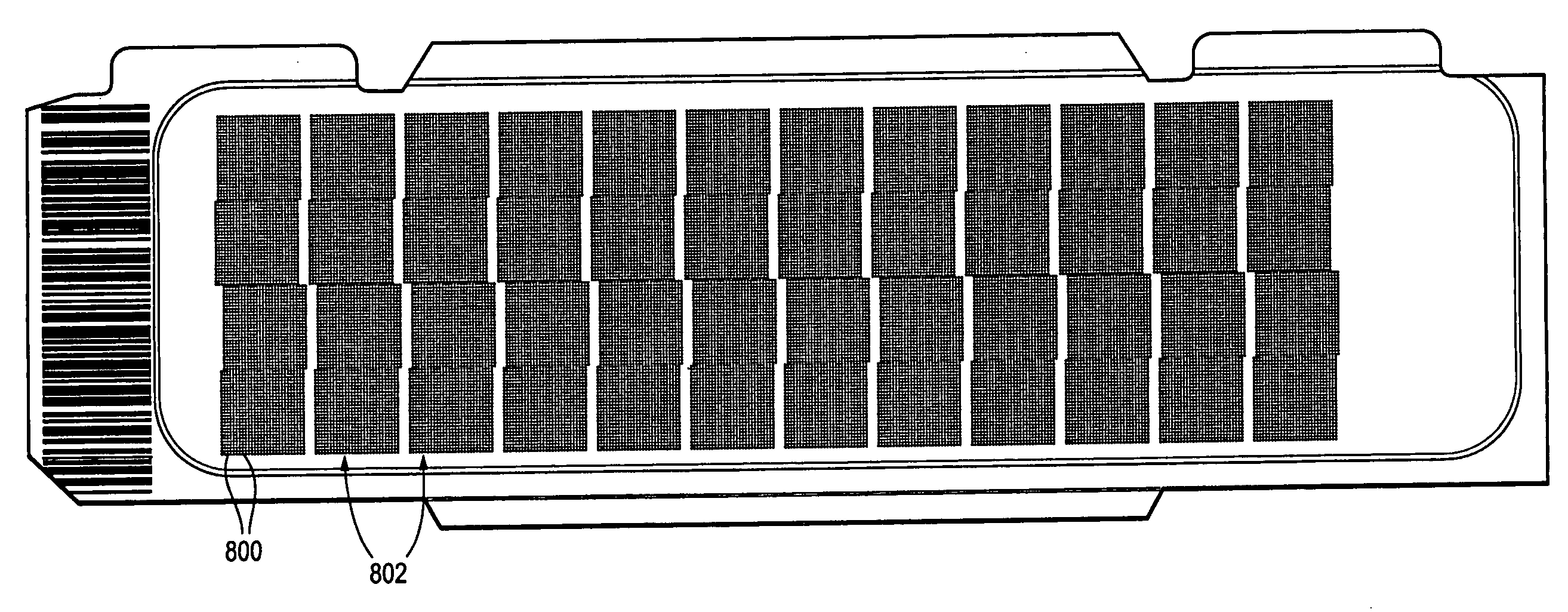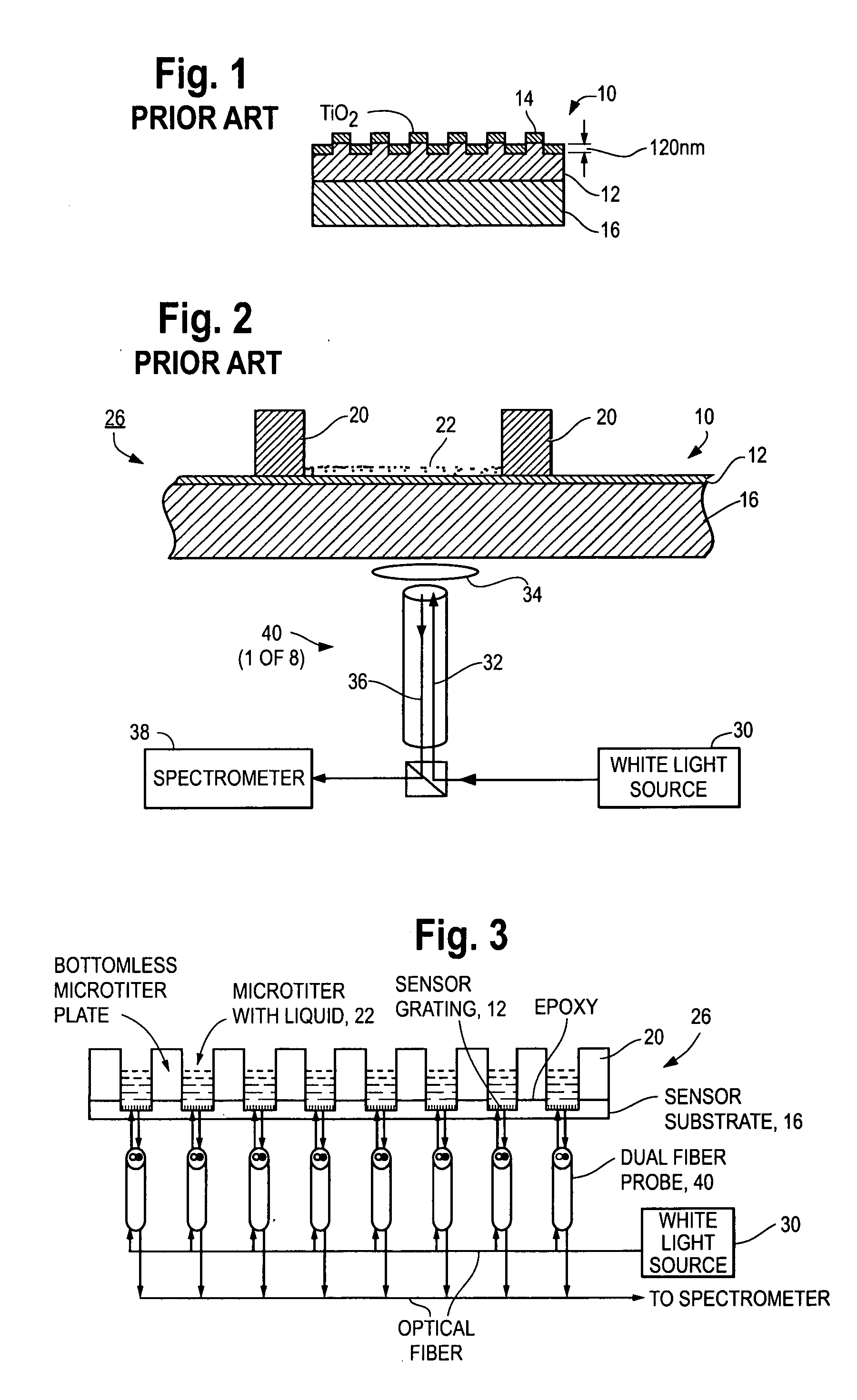Calibration and normalization method for biosensors
- Summary
- Abstract
- Description
- Claims
- Application Information
AI Technical Summary
Benefits of technology
Problems solved by technology
Method used
Image
Examples
examples
[0216]Details on the ER slides (“NovaChip”) have been published in e.g. D. Neuschäfer et al., Biosensors and Bioelectronics, 18: 489-497 (2003), or W. Budach et al., Analytical Chemistry, 75: 2571-2577 (2003). The approach takes advantage of a phenomenon that has been attributed as abnormal reflection, see e.g. S. S. Wang & R. Magnusson, Applied Optics, 32(14): 2606-2613 (1993), or O. Parriaux et al., Pure &Applied Optics, 5: 453-469 (1996). Excitation photons incident on the chip under resonance conditions couple into a thin corrugated metal oxide surface at the site of incidence. As a result of the transducer geometry, the energy is locally confined into the thin corrugated layer of high refractive index material. Consequently, strong electromagnetic fields are generated at the surface of the chip. The effect has been attributed as evanescent resonance and leads to increased fluorescence intensity of chromophores close to the surface. The effective field strength can be increased ...
PUM
| Property | Measurement | Unit |
|---|---|---|
| Mass | aaaaa | aaaaa |
| Mass | aaaaa | aaaaa |
| Concentration | aaaaa | aaaaa |
Abstract
Description
Claims
Application Information
 Login to View More
Login to View More - R&D
- Intellectual Property
- Life Sciences
- Materials
- Tech Scout
- Unparalleled Data Quality
- Higher Quality Content
- 60% Fewer Hallucinations
Browse by: Latest US Patents, China's latest patents, Technical Efficacy Thesaurus, Application Domain, Technology Topic, Popular Technical Reports.
© 2025 PatSnap. All rights reserved.Legal|Privacy policy|Modern Slavery Act Transparency Statement|Sitemap|About US| Contact US: help@patsnap.com



